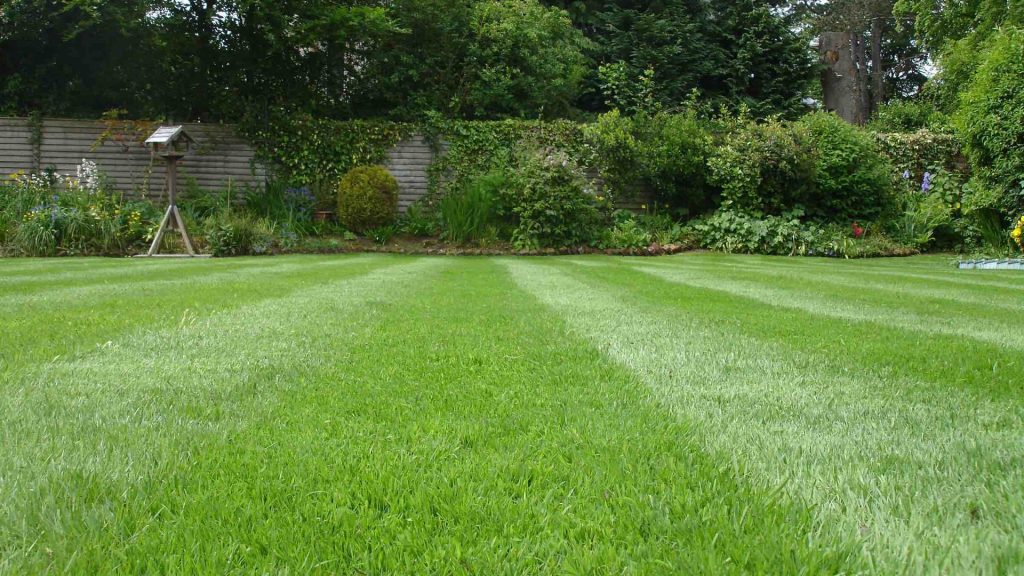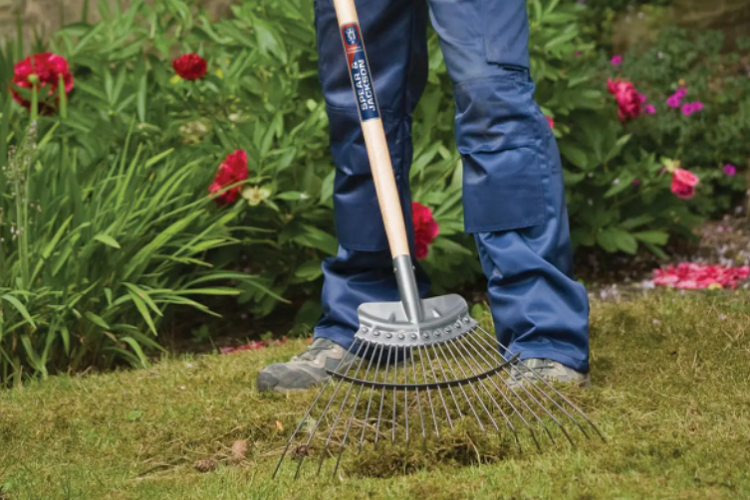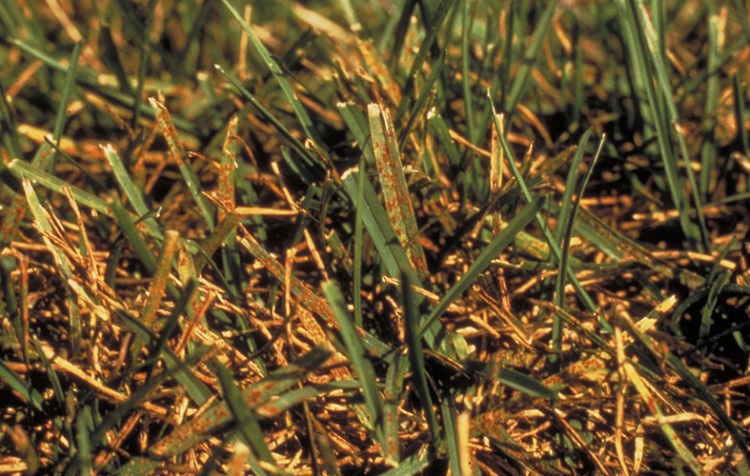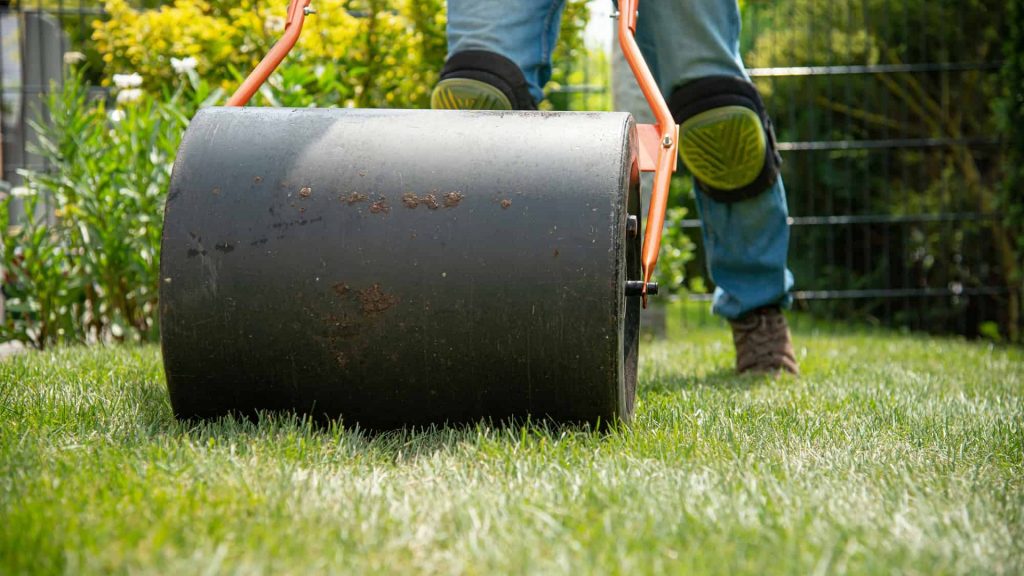
What Causes Lawn Depressions and How to Fix Them?
Most gardeners spend their time focused on the health of their grass, so when they start to notice lumps and holes in their lawn, they don’t know what to do.
Lawn depressions, as they’re commonly known, happen on all kinds of lawns and thankfully, they can be fixed.
What causes lawn depressions? A lawn depression can be caused by animals digging holes, cars and machinery being parked on the grass, children playing, and gardening equipment, among others. These holes in the ground make the lawn surface uneven and should be rectified as soon as possible to prevent them from growing. If you’ve noticed your once even lawn has developed some lumps and bumps, this guide can help.
We’ll look at why they office, the damage they can do, and how to fix them in just a few simple steps, giving you back a smooth and level lawn to enjoy.
What Causes Lawn Depressions?

Nobody achieves the perfect lawn without putting in some work, and even when you do your best to grow healthy grass, the surface of the lawn might still be suffering.
If you’ve walked on the grass lately and found that some areas appear depressed or there are bumps and lumps, there are plenty of things that could be causing it:
- Parking on the lawn: If you park your car on the lawn or have heavy machinery or play equipment sitting on it, these could cause holes. When there’s no other place to park them, moving around the position as often as possible will alleviate some of the depression.
- Children playing: Although lawns were made for our families to enjoy, certain activities or overuse can cause depressions. These are usually not too serious that they can’t be fixed though, as long as you’re tending to them regularly.
- Wild animals and pets: If you have dogs that like to dig or regularly get visited by creatures like voles, you’ll probably find some depressions left behind. This includes holes from their tunneling and mounds of dirt created from the earth they’ve dug up.
- Gardening equipment: The improper use of some home gardening equipment can cause uneven ground on your lawn. When using the lawnmower, going over the same pattern or mowing in the wet can also cause depressions.
- Weather changes: Drastic weather changes like excess rainfall or the thawing out of snow can wreak havoc on the evenness of your lawn. When the lawn is wet, mowing and using heavy equipment can also cause holes in the ground.
- Drainage issues: A lawn with poor drainage may experience soil erosion because certain areas are constantly exposed to moisture. You may need to rectify drainage issues before attempting to fix the uneven earth.
- Buried debris: Whether it’s old building materials or organic matter like a tree root, these things decomposing and breaking down can cause the soil above it to drop as well which creates a hole.
- Sewer lines: If the water or sewer line underneath your lawn is damaged and has leaks or cracks, this can lead to the soil falling. For this type of problem, intervention by a plumbing expert is required and it should be treated urgently.
Are They Harmful to Your Lawn?

Although lawn depressions can do further damage to your lawn if left untreated and unmaintained, the main concern with them is that they pose a safety risk.
With an uneven lawn, the people and pets using the grass can trip, slip, and fall which can lead to issues like broken and sprained bones, if not worse.
For your lawn’s sake, fixing depressions is also a must, as it prevents the holes from spreading further and getting larger.
With lawn depressions, you’ll find further issues with drainage and erosion, and find it harder to do every gardening task like mowing, watering, and raking when they’re present.
Therefore, as soon as you notice a hole or unevenness, you should aim to fix it immediately.
How to Fix Them

Unless your lawn is in need of serious TLC, a simple top dressing with a soil solution should do the trick. Follow these steps to smooth out any lumps and bumps on the lawn and get your grass back into great shape. Leveling your lawn should be part of a standard yearly lawn maintenance procedure.
- Assess the cause of the lawn depression before you attempt to fix it. Ignoring the issue will only cause it to happen again, so you want it rectified.
- Map out the area of the lawn that you want to fix, aiming to do at least a few feet around all sides of the depression.
- Dethatch the area that you’ll be focused on so that you remove all of the dead grass that’s built up underneath it.
- Create a DIY topdressing mixture that can be thrown on top. This should include topsoil, sand, and compost, at a ratio to suit what your current soil conditions are like.
- Fill the hole with just a little bit of soil at a time, aiming for around half an inch of coverage in each application.
- Using a hard rake, spread the soil across the surface of the depression and make sure it’s evenly covering it and that the topdressing is reaching the soil below.
- Water the fixed area with a light sprinkle, being careful not to water too much or you’ll create a pool in the depression.
- Wait two weeks and assess how the hole is going. If it appears to be settled, you can leave it, but if it still seems low, you’ll need to repeat the previous steps and try again.
Should You Level and Reseed?

If you don’t think your lawn can be fixed with some top dressing alone, you may need to level it completely and reseed it. To fill a lawn with deep depressions, these are the steps required to reseed and level it.
- Aerate the area where the depression is, covering a few feet on either side of the hole.
- Soak the area by watering it with your garden hose for a few minutes. You want any loose soil to fall to the bottom so it can be filled effectively.
- Pour a large amount of topsoil onto the depression so it’s overfilled. The goal is to create a large hump over the hole which will eventually sink down and fill up.
- Leave the earth mound for two weeks while it settles, and occasionally give it a light watering with your hose to promote movement. The soil should not be tight and compact as you want it to naturally settle with space for seeds to grow roots.
- Once the soil has settled and is level with the lawn, you can reseed the area. Continue watering as you would with a standard reseeding process.
- Be careful with the newly seeded area for a few months and avoid stepping on it as much as possible.
A Bump-Free, Beautiful Lawn
It’s near impossible to avoid lawn depressions from popping up occasionally, so it’s how we treat them that truly matters.
With a few simple steps and an awareness of the most common causes, you’ll ensure your lawn stays smooth and even for you and your family to enjoy.
Related Questions
Lawn depressions are just one of the everyday issues that plague gardeners on their quest for the perfect lawn.
If you’re aiming for luscious, thick grass on your property, read on for a few questions about the other common problems that might need to be solved to achieve it.
How Do I Know If I Have Thatch?
To assess how much thatch is underneath your grass, dig up a small wedge between the grass and the soil and take a measurement.
If there are more than one or two inches of thatch, you’ll need to dethatch the lawn, otherwise, it can cause issues with poor growth and more dead grass.
What Is Lawn Rust?

Lawn rust is a common disease caused by fungus and it creates rust-colored spots on the grass.
If you touch it, the rust spots feel like a powdery substance that coats the grass, and you can treat it easily with a regular application of fertilizer to balance out the nutrients of the lawn.
Does Compost Add Nitrogen to Soil?
Adding compost to your lawn will inevitably add nitrogen to the soil as it releases nutrients over time, and there’s no need to mix it through the soil just for it to work.
For this reason, compost is a popular choice for natural topdressing fertilizer and can provide the nutrients grass needs to thrive.
Resources:

